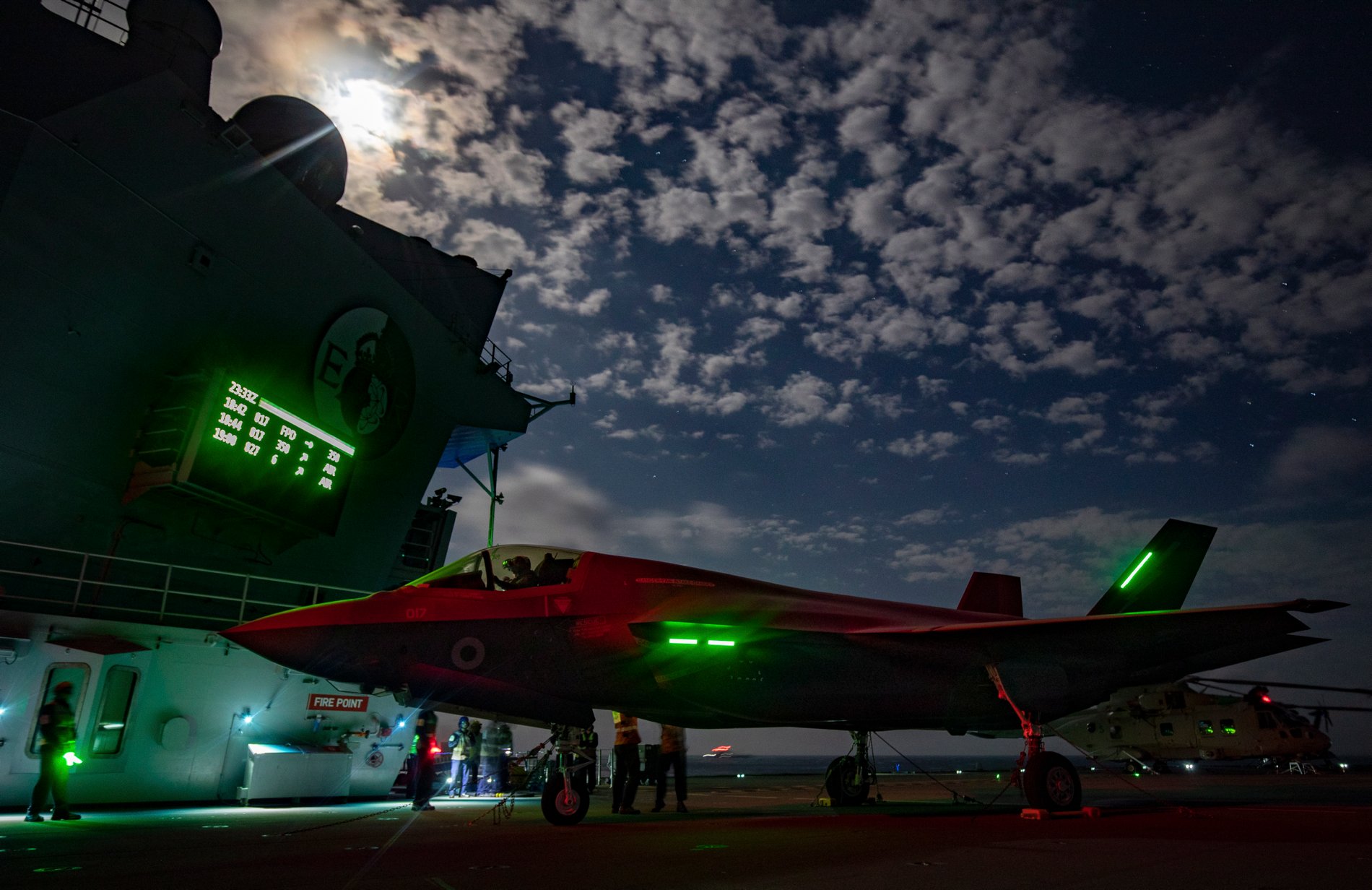
The U.S. and U.K. defense secretaries formally signed an agreement outlining their joint participation in the Queen Elizabeth Carrier Strike Group deployment this spring.
Joining HMS Queen Elizabeth (R08) on its inaugural deployment will be Marine Fighter Attack Squadron (VMFA) 211, which flies the F-35B Joint Strike Fighter, as well as USS The Sullivans (DDG-68), according to statements from both countries.
“I am delighted that the UK now possesses a 21st century Carrier Strike capability, which has been greatly assisted by the unswerving support and cooperation of the United States at all levels over the past decade,” Defence Secretary Ben Wallace said in the U.K. statement.
“This deployment embodies the strength of our bilateral ties and reflects the depth and breadth of this vital defence and security partnership.”
“This deployment underscores the strength of our bilateral ties and demonstrates U.S.-UK interoperability, both of which are key tenets of the U.S. National Defense Strategy,” reads the U.S. statement.
“The leaders look forward to seeing the culmination of nearly a decade of U.S.-UK carrier cooperation when Carrier Strike Group 2021 sets sail from Portsmouth, UK later this year.”
The Marines from VMFA-211 were tapped to serve alongside the Royal Air Force’s 617 Squadron “The Dambusters” on this “Carrier Strike 21” deployment. The U.S. Marines are helping fill out the air wing until the U.K. stands up more squadrons. The Marines got underway on the carrier in September and participated in a Group Exercise and NATO Joint Warrior Exercises in October, culminating in an initial operating capability declaration for the carrier strike group on Jan. 4.
During those exercises, The Sullivans and Dutch frigate HNLMS Evertsen (F805) served in the strike group as carrier escorts.
U.S. Navy and U.K. Royal Navy ships have increasingly worked alongside each other and under the same command structure as the U.S. operates more in the North Atlantic. Last year, Spain-based Arleigh Burke-class guided-missile destroyers USS Donald Cook (DDG-75), USS Porter (DDG-78) and USS Roosevelt (DDG-80) operated in the Barents Sea in May alongside fast combat support ship USNS Supply (T-AOE-6) and HMS Kent (F-78).
In September, HMS Sutherland (F81) led a surface action group that included USS Ross (DDG-71), British Royal Fleet Auxiliary RFA Tidespring (A136) and Royal Norwegian frigate HNoMS Thor Heyerdahl (F314). These Arctic operations were meant to show increasing interoperability between North Atlantic and Arctic navies to push back against Russian naval operations. The upcoming carrier deployment will take the SAG deployment a step further, putting U.K. Royal Navy officers in command of an even larger and more complex international naval formation.
The deployment will be the first operational carrier deployment for the U.K. since HMS Illustrious (R06) was decommissioned in 2014, and the first operational employment of fixed-wing jets from a Royal Navy carrier since 2011.





